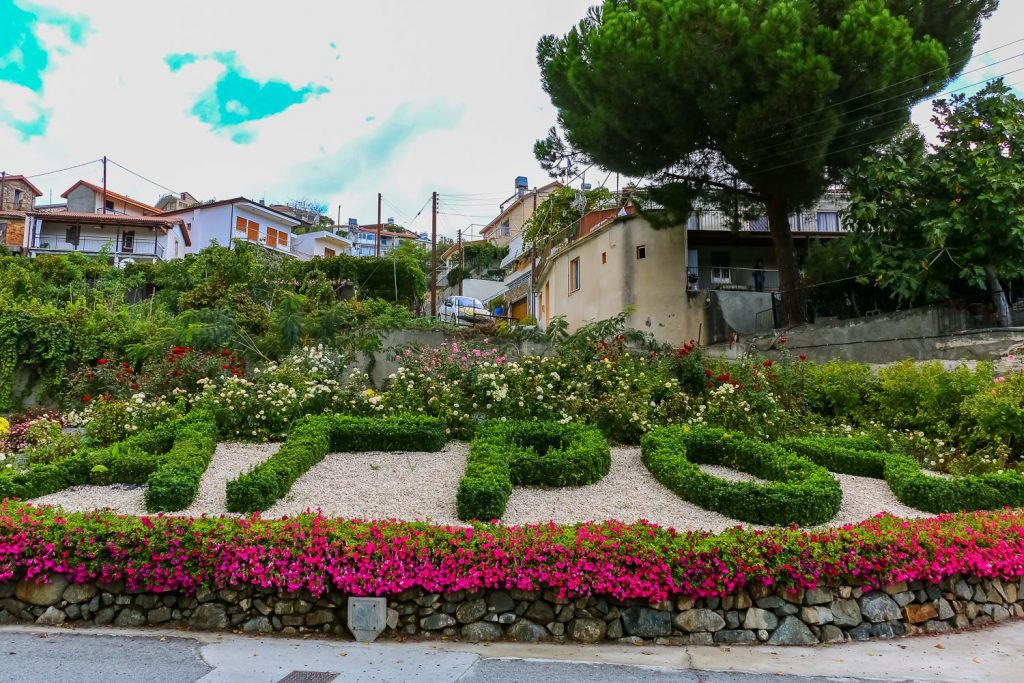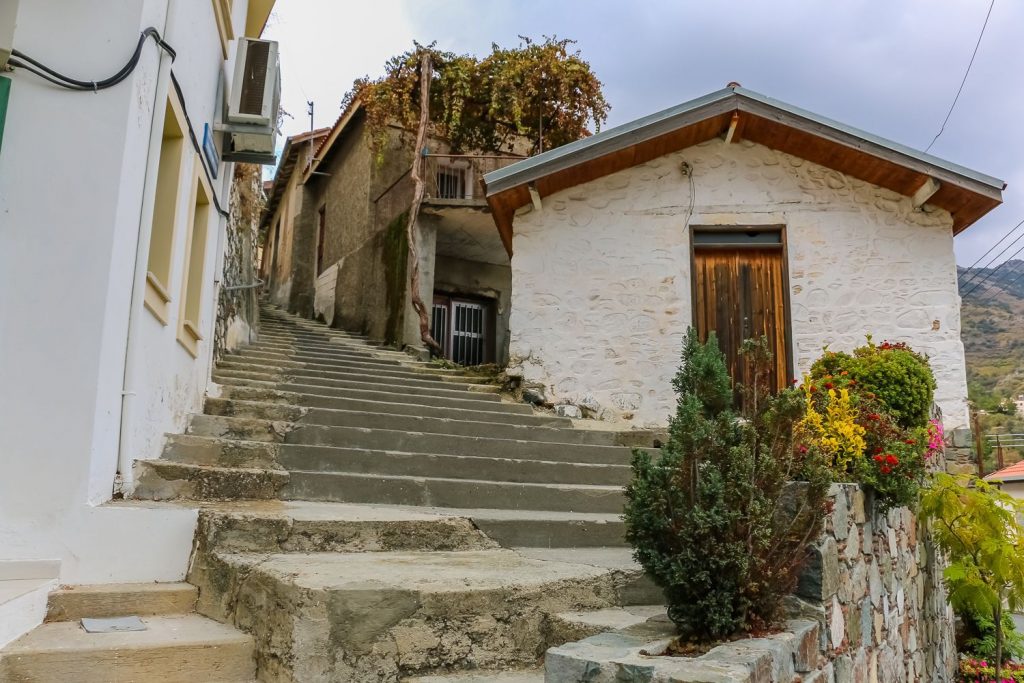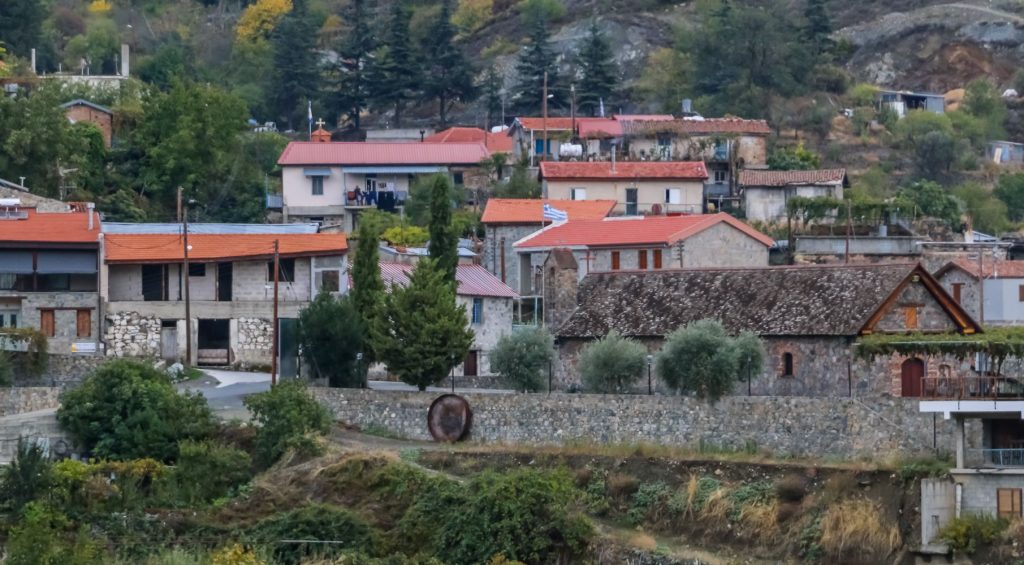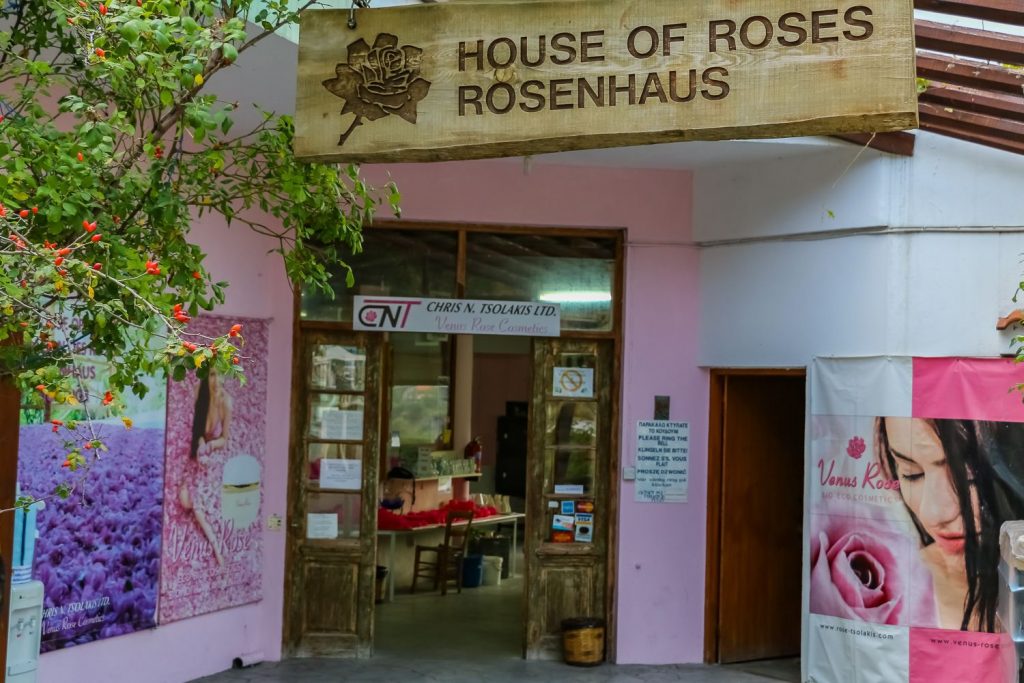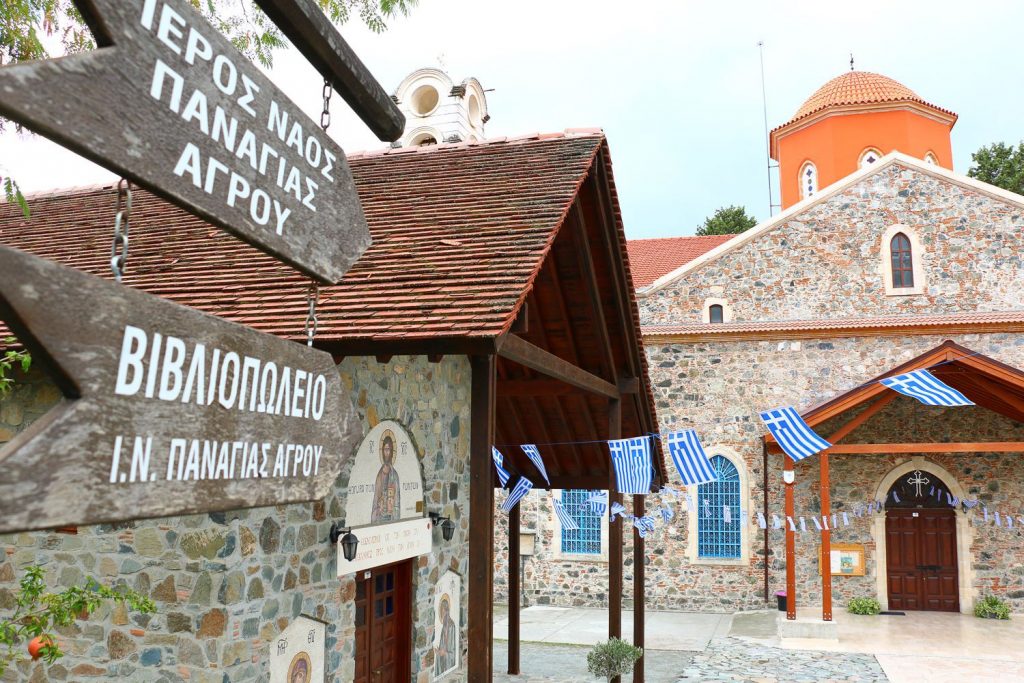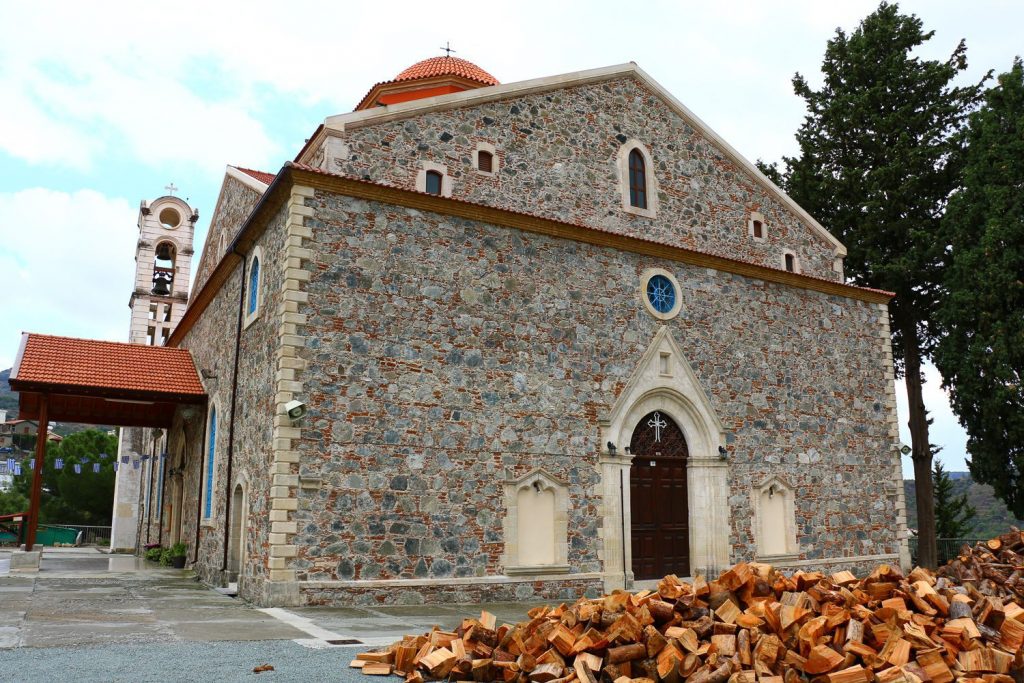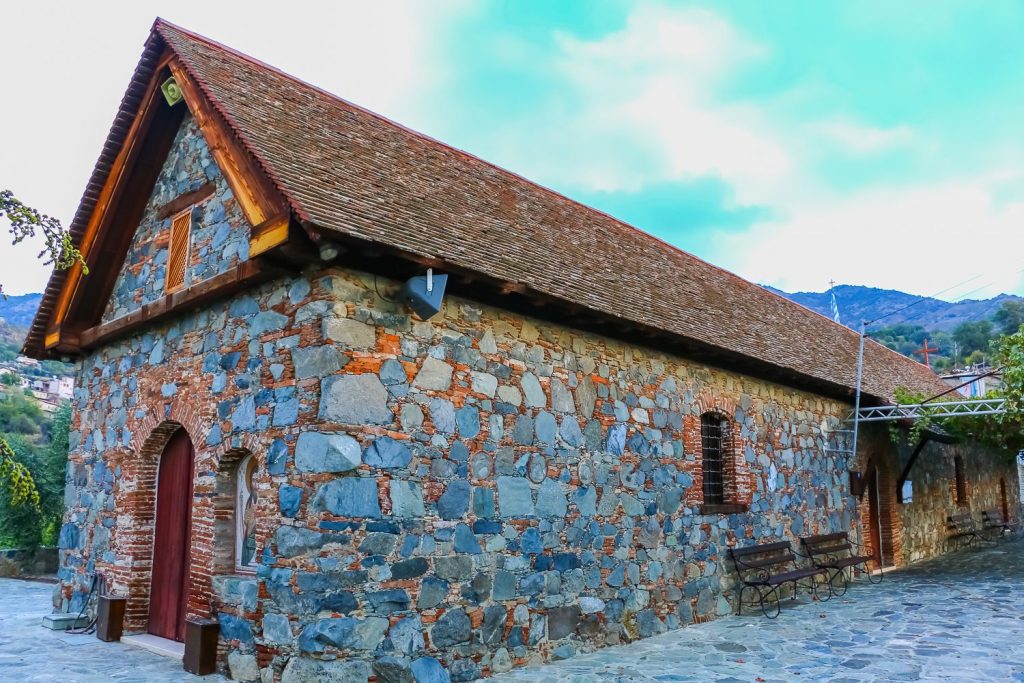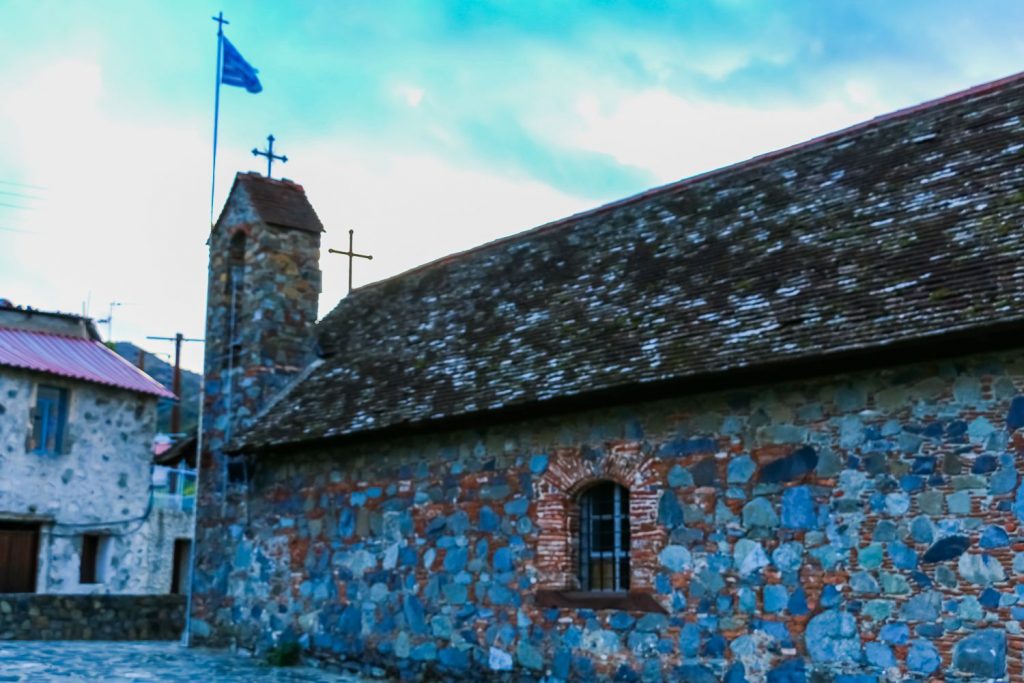Agros
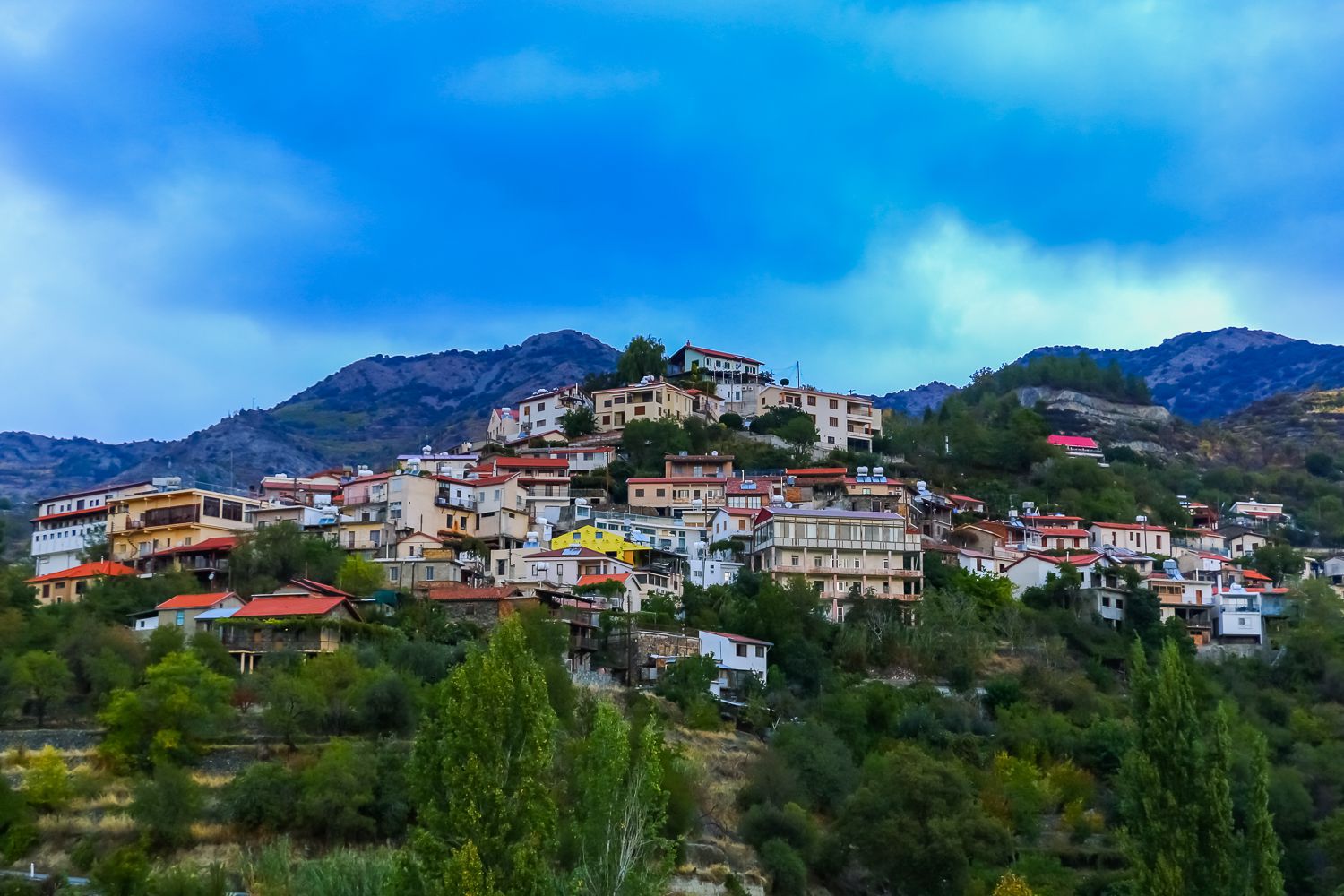
Agros is a village in the district of Limassol in Cyprus and is located 38 km to the north of Limassol, 88 kilometers west of Larnaca, 58 km southwest of Nicosia and 85 kilometers east of Paphos.
A mountainous village built amphitheatrically on the slopes of the Troodos mountains at an altitude of 1,100 meters, Agros is the main village of the region of Pitsilia, nestled in the heart of the region, between the tall mountains. One of the developed tourist resorts of Crete, Agros combines tradition, culture and development, without altering its character. It is one of the most famous villages not only in Limassol but of all Cyprus and mostly known for the attractions and sights of the region and its local products, such as grape derivatives (soutzoukos, palouzes), the famous rosewater of Agros, traditional smoked cured meat products, sweet preserves, tea, liqueur, wine, scented candles and organic cosmetics. There is actually a celebration that honors one of the most known products of the community, the festival Triantafyllou of Agros (Rose Festival).
The rich history of the region is complemented by the well-known personalities that were born here, as it is the birthplace of the Clerides family and of the Nobel laureate economist Christopher Pissarides.
The approximately 800 inhabitants of Agros, having come to terms with the requirements of the modern times, have modernized their production processes, while preserving the authenticity of the products, and today have succeeded in offering high quality services to visitors in every field.
The name of the community comes from the Monastery of Megalos Agros (large field) which stood at the current location of the church of Panagia Eleousa. According to tradition, the monastery of Megalos Agros was built by 40 monks who arrived here in the era of iconoclasm, after they had left their convent in Cyzicus in Asia Minor. The abbot of the monastery refused to sign the imperial decrees against the icons, was then condemned and exiled. The monks who lived with him in Asia Minor, after his death, decided to come to Cyprus and built the monastery, bringing with them the image of the Virgin of Eleousa in 817 AD.
In the 17th century (1692 AD) those who survived the cholera epidemic that broke out in Cyprus and wiped out 2/3 of the population, fled and built their homes around the convent, creating the village of Agros. The monastery operated until 1830, and until 1880, since it no longer housed monks, the diocese began to rent out rooms. In 1894 the monastery was destroyed and next to the current big church of Panagia Eleousa stands the Byzantine Ecclesiastical Museum of Panagia Agros with icons dating back to the12th century, relics, books and utensils rescued from the historic monastery.
The stone, three-aisled church of Panagia Eleousa, cruciform with a dome and with an impressive bell tower is located in the center of the village and was built in 1919 in the location were once stood the Monastery of Megalos Agros. The construction began in 1894, the same year the monastery was demolished and at the same place. The wooden iconostasis of the church has the hagiographic icons of Frangoulides, who lived in the village from 1932 to 1934. The dedicated image of the Virgin, which dates back to the 1856, is exhibited in the Byzantine Ecclesiastical Museum of Panagia Agros . Panagia Eleousa is celebrated on November 21, at the Annunciation of the Virgin Mary, and on that day a big festival is held in the village, with faithful visitors arriving from all over Cyprus.
In the community you will also find the church of Ioanni tou Prodromou (John the Baptist) and the church of Apostolou Varnava (St. Barnabas).
The tiled-roofed, stone basilica of Timios Prodromos (John the Baptist), celebrated on August 29, is located to the east of Agros and was built in 1860. The wooden iconostasis is from 1914 and the dedicated image dates back to 1887, and as a church it is considered unique throughout Cyprus due to its large length, reaching up to 30 meters.
The modern basilica church of Agios Gerasimos (St. Gerasimos) of 2008, is located near the high school of Agros and the basilica with the wooden roof of Agia Kyriaki (St. Kyriaki) of 1993 is located five kilometers to the northeast from the village. From there you can also discern the monument of the Cypriot Woman Fighter of Pitsilias of 1955.
Next to the church of Ioanni tou Prodromou (John the Baptist), the visitor will see the olive mill of Agros of the parish Pera Geitonia that is housed in a traditional stone house. The olive mill comprises of the manual system used in order to produce olive oil, the press, the grinder, and the baskets.
Agros also has one of the most important museums of the wider region, the Frangoulidis Museum located in a stone building in the village center and near the church of Panagia Eleousa. Frangoulidis is considered as one of the most important artists and painters and he lived in the village from 1932 to 1934. In fact he undertook the painting of the church of Panagia Eleousa during his stay in the region. The drinking fountain of Kaoura is a stone-building from the early 20th century, where cool water flows during the summer months and it is located in the square next to the bust of Nearchos Clerides. Tradition says that whoever drinks from this fountain will marry in Agros. At the fountain, visitors can taste the famous water of Agros, whose sources have a recorded history of 2000 years and even during periods of drought on the island, the sources remained inexhaustible, and so, justifiably, the locals consider them blessed. This water is special because it is soft and tasty, whereas due to its percolation through the rocks in the area, it combines low salts and sodium and is rich in minerals.
Among the sights of the village is also the dam, the stone-built Apeitio School and the dens of the EOKA fighters.
For the nature lovers and hikers, the two Nature Trails that start from the village, display the natural beauty of the area, with one of them ending at the Kato Mylo and the other in Lagoudera, while ideal for walking is also the park in the south of the village, near the church of John the Baptist, – the "Anastasia Park" with the verdant lush gardens and a pond with fish. To the southeast of the community, there is the Park Agiou Louka with a picnic area, drinking fountains and a playground.
Agros also does not lack in historical monuments, which are there to remind us of the contribution of the residents in the resistance of the region, as well as the major benefactors, such as the Monument of Petros Eliades, the Women Fighters of Pitsilias, of Kyriakos Apeitou and Nearchos Clerides, the Founders of the Anotera Scholi (Higher School).
The village, being the largest settlement of Pitsilia, has all the infrastructure, kindergarten, elementary school, high school, center of agricultural education, police station, post office, health center, banks, supermarket, soccer field, indoor basketball court and theater.
Visitors will find several taverns and restaurants offering the traditional hospitality and traditional dishes and not only, that will satisfy the most demanding customers. Hotels, hostels and apartments in the residential core of the village or right outside it, offer quiet relaxation, while the visitor can wander in the shops-workshops of the traditional crafts of Agros, such as Allantika (Cured Meats) of Daskalos, the sweets of Niki, Rose factory of Tsolakis and rosewater. The modern cafeterias and the traditional cafes offer breakfast and afternoon coffee, sweet preserves, and even drinks.
Roses is one of the traditional elements of the community, “blossoming” at the Tsolaki Rose factory and the local cooperative company. The Rosa damascena, as is the official name of the local variety, was developed in the 20th century and it is used to produce the famous rosewater. It is said that the first rosebush was brought to Agros by the renowned teacher and folklorist Nearchos Clerides who also taught the inhabitants how to produce rosewater.
The other traditional products that have given Agros its reputation are the cured meats, such as posyrti (smoked bacon), ham, lountza and sausages, which visitors will find at the Allantika (Cured Meats) of Daskalos and elsewhere. At Glyka (sweets) of Niki, famous throughout Cyprus, more than 60 different types of sweets and jams are produced, exported to many foreign countries, even to Japan.

